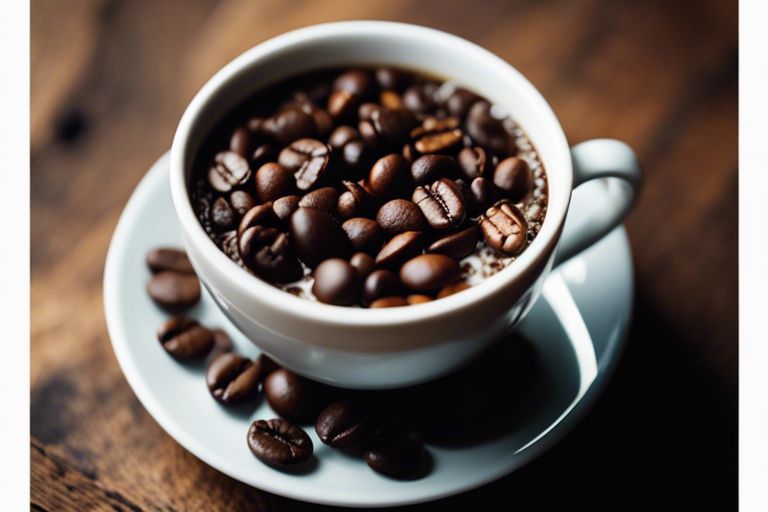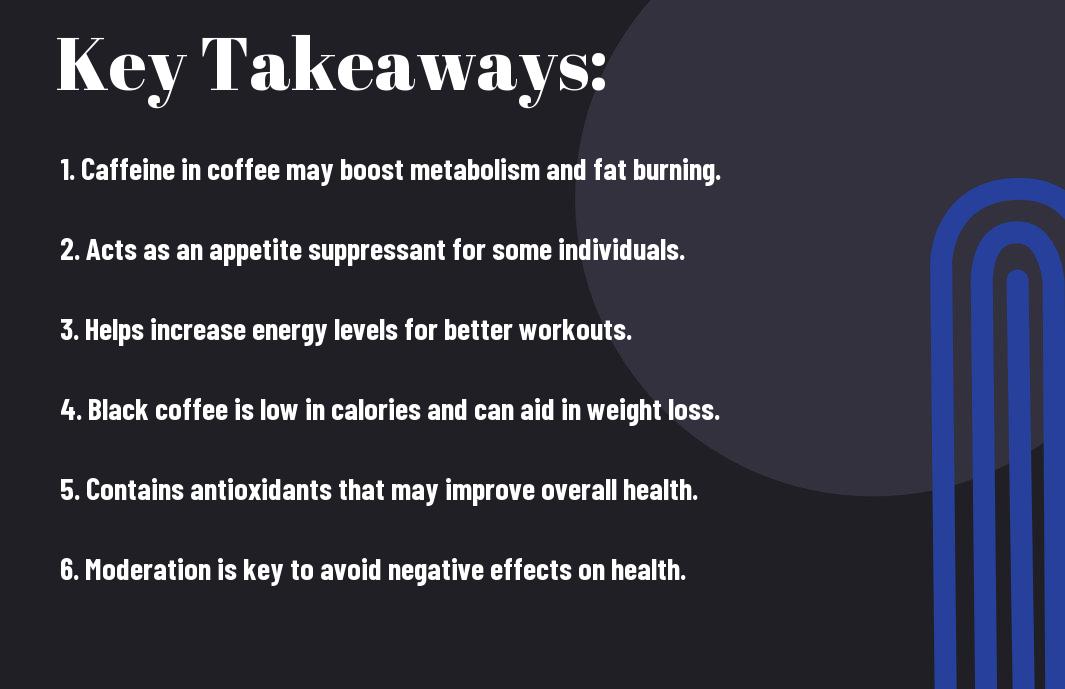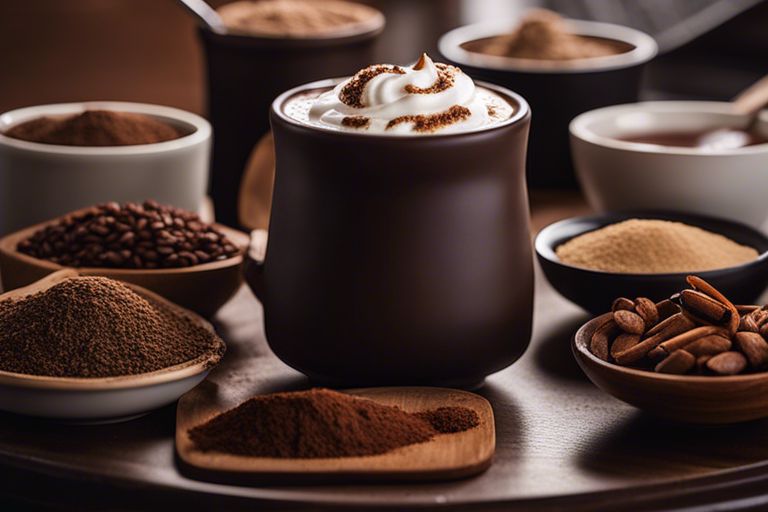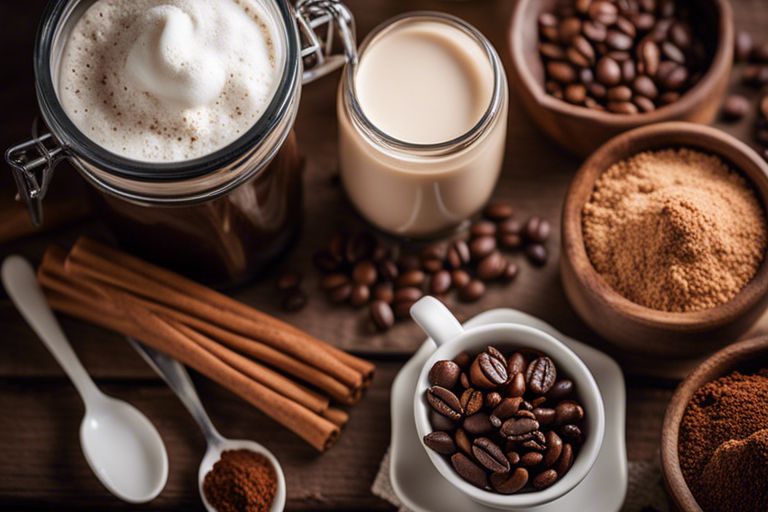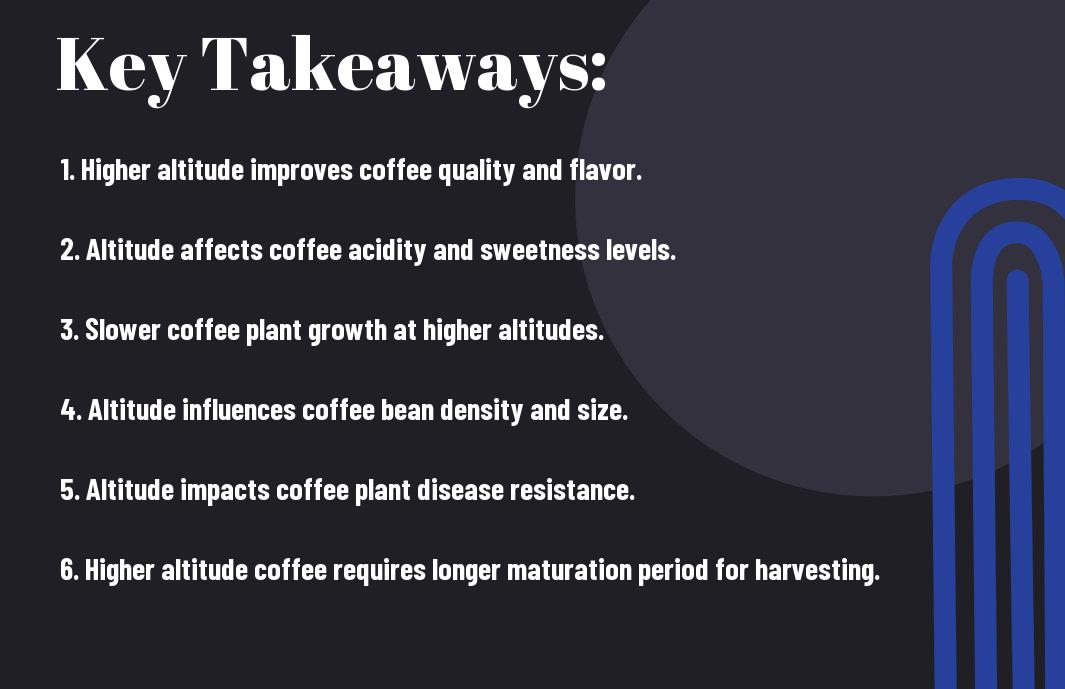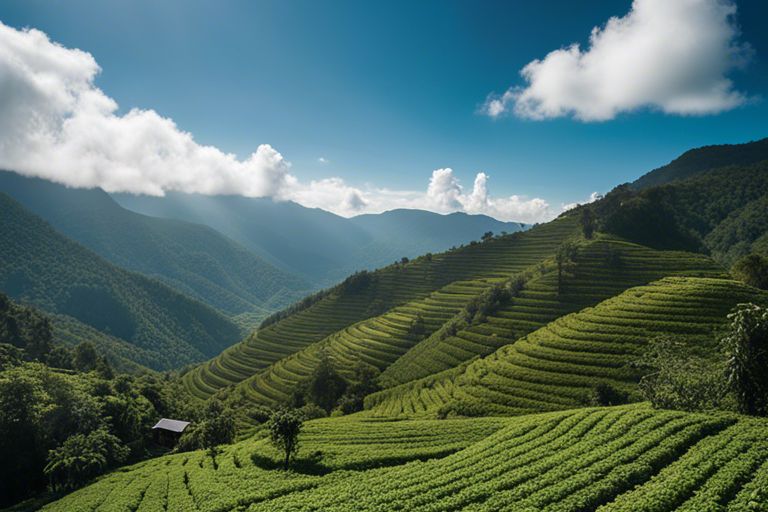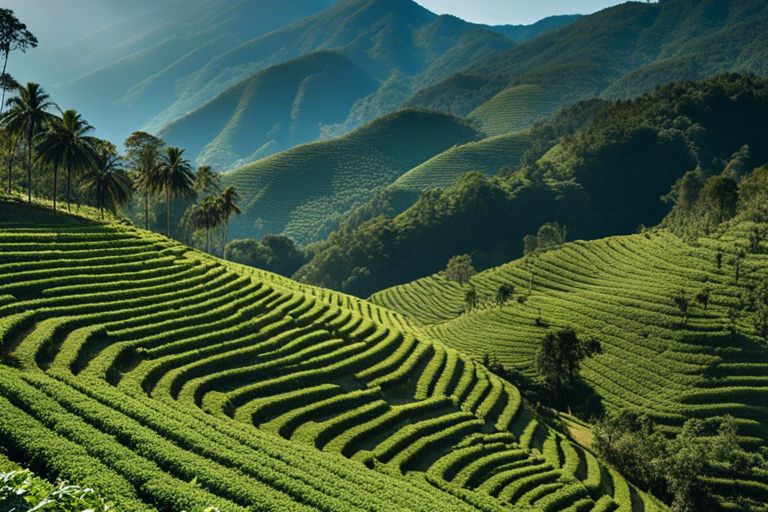Difference in taste, caffeine content, and growing conditions set Arabica and Robusta coffee beans apart. Arabica, known for its nuanced flavors and smoothness, grows at higher altitudes in cooler climates, while Robusta thrives at lower elevations with a stronger, more bitter taste profile. Understanding these distinctions can enhance your appreciation for the complexities of your morning brew.

Key Takeaways:
- Origin: Arabica coffee beans are often considered the superior choice due to their smoother, more nuanced flavor profile, while Robusta beans are known for their strong, bitter taste.
- Caffeine Content: Robusta beans contain almost double the caffeine content compared to Arabica beans, making them a popular choice for those seeking a more potent pick-me-up.
- Growth Conditions: Arabica beans require higher altitudes and cooler temperatures to thrive, while Robusta beans are more resilient, thriving in lower altitudes and warmer climates.
- Price Point: Arabica beans are generally more expensive than Robusta beans due to the meticulous growing conditions required, making them a premium choice for coffee enthusiasts.
- Flavor Profiles: Arabica beans are known for their diverse range of flavors, from floral and fruity notes to chocolatey undertones, whereas Robusta beans are characterized by their earthy, nutty, and sometimes woody flavors.
Embracing the nuances of these two popular coffee bean varieties can elevate your coffee experience, allowing you to appreciate the distinct characteristics each one brings to your cup.
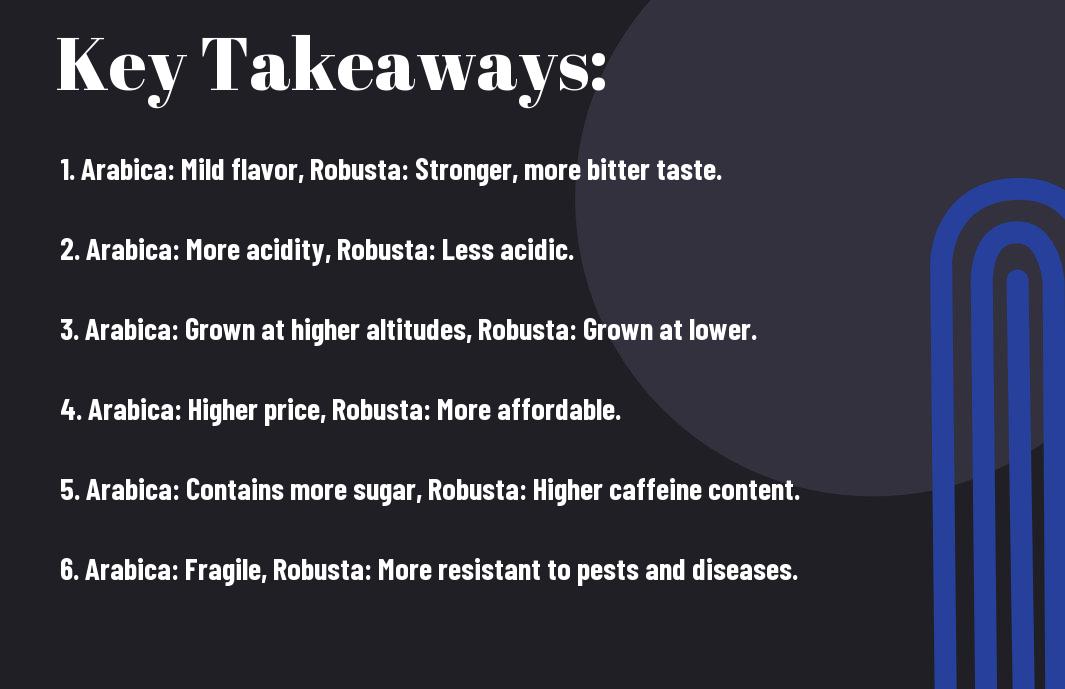
History of Coffee Beans
Origins of Arabica
Arabica coffee beans are believed to have originated in the highlands of Ethiopia, where the plant was first cultivated by humans over a thousand years ago. Legend has it that a shepherd named Kaldi discovered the energizing effects of the coffee cherries after noticing his goats become more energetic upon consuming them. This discovery eventually led to the spread of coffee cultivation throughout the Arabian Peninsula and later to the rest of the world.
Origins of Robusta
The Robusta variety of coffee beans originated in the forests of Central and Western Africa. Unlike Arabica, Robusta coffee plants are more resilient and can thrive in lower altitudes and hotter climates. The Robusta bean has a more bitter and stronger taste compared to Arabica, making it a popular choice for espresso blends and instant coffee.
To this day, Arabica and Robusta coffee beans continue to be cultivated in different regions of the world, each offering unique flavors and characteristics that cater to the diverse preferences of coffee drinkers worldwide.
Flavor Profile
Arabica’s Delicate Taste
The Arabica coffee bean is celebrated for its exquisite flavor profile, which is often described as being smooth, complex, and with a wide range of nuanced flavors. This type of coffee bean is known for its delicate taste, which can feature notes of fruit, berries, flowers, and even chocolate. Arabica beans are highly prized for their acidity, which is bright and lively, adding a refreshing zest to the coffee.
Robusta’s Bitterness
Robusta coffee beans, on the other hand, are recognized for their bold and strong flavor profile, often characterized by a significant bitterness. This type of coffee bean tends to have a higher caffeine content and a more pronounced earthy or woody taste compared to Arabica beans. Robusta is also known for its thick and velvety crema, making it an excellent choice for espresso blends.
Robusta’s bitterness can be a desirable trait for coffee drinkers who prefer a more intense and robust flavor in their cup of coffee. Its distinctive taste profile adds depth and character to coffee blends, providing a unique experience for those who enjoy a strong and full-bodied brew.
Flavor: Arabica beans offer a delicate and nuanced flavor profile, while Robusta beans are known for their bold bitterness, catering to different preferences among coffee connoisseurs.

Caffeine Content
Arabica’s Lower Caffeine Levels
Now, when it comes to caffeine content, Arabica coffee beans generally contain lower levels of caffeine compared to Robusta beans. The average caffeine content in Arabica beans is around 1.2% to 1.5%, making it a preferred choice for those who are sensitive to caffeine or prefer a milder kick in their coffee.
Robusta’s Higher Caffeine Content
With Robusta beans, on the other hand, you get a real jolt of caffeine. These beans contain a higher caffeine content, typically ranging from 2.2% to 2.7%. This makes Robusta a popular choice for espresso blends, as the higher caffeine content contributes to a strong, bold flavor profile.
Another point to note is that the higher caffeine content in Robusta beans also makes them more resilient to pests and diseases, as caffeine acts as a natural defense mechanism for the coffee plant. This resilience is why Robusta beans are often grown at lower altitudes and in harsher climates compared to Arabica beans.
Growing Conditions
Arabica’s High-Altitude Requirements
Unlike its robust cousin, Arabica coffee thrives in high-altitude regions. For Arabica beans to flourish, they require altitudes between 2,000 and 6,000 feet. These elevated regions with cooler temperatures provide the ideal conditions for Arabica plants to develop slowly, allowing the beans to mature and develop complex flavors.
Robusta’s Easier Cultivation
Conditions are quite different for Robusta coffee beans. Unlike Arabica, Robusta can be grown at lower altitudes ranging from sea level to 2,000 feet. The robusta plant is more resilient to varying climates and is less susceptible to pests and diseases, making it easier to cultivate for farmers.
The ease of cultivation and higher resistance to pests and diseases make Robusta a more attractive option for farmers in regions where conditions may not be as favorable for the delicate Arabica plants. This resilience contributes to the greater prevalence of Robusta beans in the global coffee market.
Production and Trade
For Arabica and Robusta – Coffee bean production, there are significant differences in costs and availability that impact the trade and consumption of these two popular coffee bean types.
Arabica’s Higher Production Costs
With Arabica coffee beans, higher production costs are often associated with factors such as the altitude at which the beans are grown, the care and attention required during cultivation, and the susceptibility of Arabica plants to pests and diseases. These factors contribute to a higher price point for Arabica beans compared to Robusta beans in the market.
Robusta’s Wider Availability
Robusta coffee beans are known for their resilience and ability to thrive in a wider range of environments, making them more readily available than Arabica beans. This wider availability of Robusta beans contributes to their lower price point compared to Arabica beans.
Robustas are often favored for their bold and strong flavor profile, making them a popular choice for espresso blends and instant coffee production due to their cost-effectiveness and consistent quality.
Arabicas, on the other hand, are prized for their complex flavors, acidity, and aromatic qualities, appealing to coffee connoisseurs looking for a more nuanced and sophisticated coffee experience, despite the higher production costs associated with this delicate and sought-after bean.
Health Benefits
Many studies have shown that both Arabica and Robusta coffee beans contain compounds with various health benefits. However, Arabica coffee, in particular, is known for its antioxidant properties which can help protect cells from damage caused by free radicals. Antioxidants such as chlorogenic acid and melanoidins found in Arabica coffee have been linked to reducing inflammation, improving cardiovascular health, and even lowering the risk of certain chronic diseases.
Arabica’s Antioxidant Properties
On the other hand, Robusta coffee beans are said to have higher caffeine content compared to Arabica beans. While caffeine can offer certain health benefits such as improved focus and energy levels, consuming too much caffeine can lead to side effects such as increased heart rate, anxiety, and insomnia. It is important to consume Robusta coffee in moderation to avoid potential health risks associated with excessive caffeine consumption.
Robusta’s Potential Health Risks
Properties including higher caffeine content in Robusta coffee beans can provide a stronger flavor profile and a more intense caffeine boost compared to Arabica beans. However, individuals sensitive to caffeine or those with certain health conditions may want to opt for Arabica coffee instead to avoid potential negative side effects. It is always recommended to consult with a healthcare provider to determine the best option based on individual health needs and sensitivities.
To wrap up
With these considerations in mind, it is clear that Arabica and Robusta coffee beans differ significantly in terms of flavor profile, caffeine content, growing conditions, and price. Arabica beans are known for their complex flavors and smooth taste, making them popular among coffee connoisseurs. On the other hand, Robusta beans are more bitter and contain higher caffeine levels, making them suitable for those who prefer a stronger and more robust brew.
For more in-depth information on Arabica vs Robusta Coffee Beans, you can visit Starbucks.
FAQ
Q: What is the difference between Arabica and Robusta coffee beans?
A: Arabica and Robusta are two of the most popular types of coffee beans. Arabica beans are known for their delicate flavors and aromas, while Robusta beans are generally more bitter and stronger in taste.
Q: What are the main characteristics of Arabica coffee beans?
A: Arabica coffee beans are grown at higher altitudes, which results in a smoother and more complex flavor profile. They are also more susceptible to pests and diseases, making them more expensive to produce.
Q: How do Robusta coffee beans differ from Arabica?
A: Robusta coffee beans are grown at lower altitudes and are more resilient to pests and diseases. They have a higher caffeine content and tend to have a more bitter taste compared to Arabica beans.
Q: Which type of coffee bean is more widely consumed?
A: Arabica coffee beans make up a majority of the world’s coffee production, as they are preferred for their superior taste and aroma. Robusta beans are often used in blends or instant coffees for their caffeine content and lower cost.
Q: Are there any health benefits associated with Arabica or Robusta coffee beans?
A: Both Arabica and Robusta coffee beans have antioxidant properties and can provide a boost in energy and mental alertness due to their caffeine content. However, Arabica beans are generally considered to be of higher quality and offer a more enjoyable taste experience.






